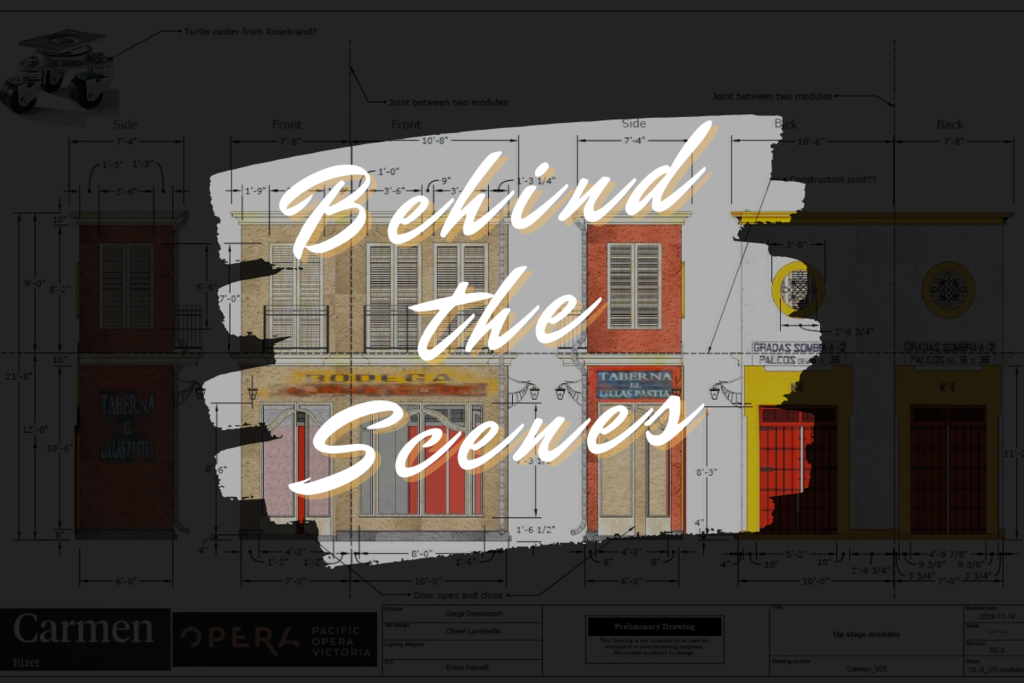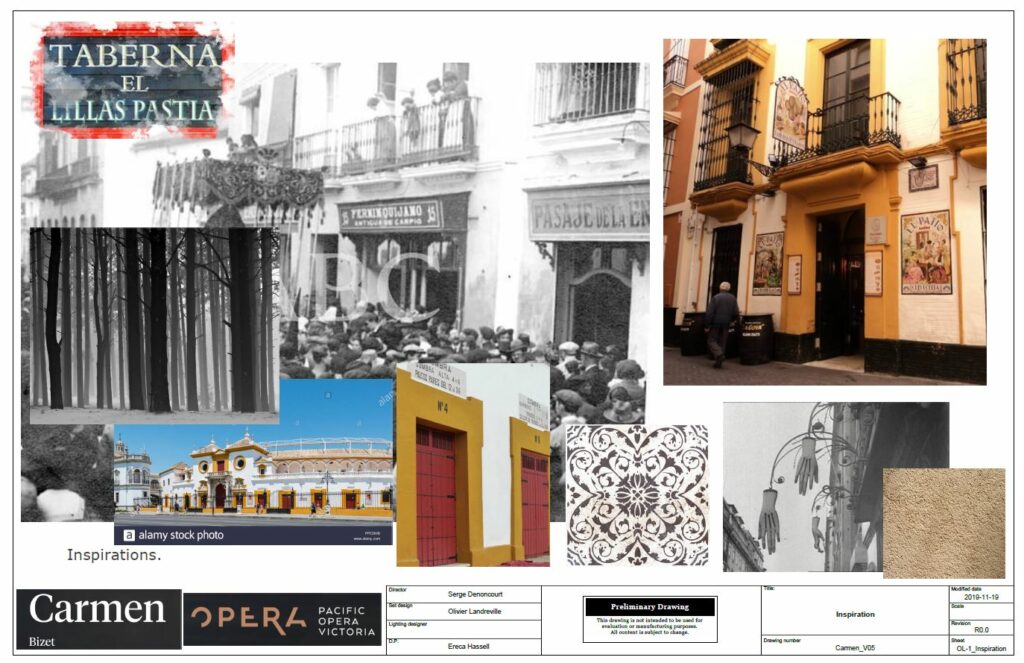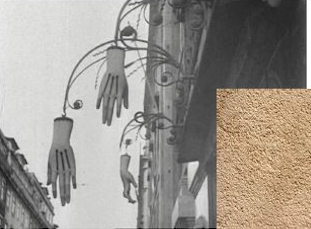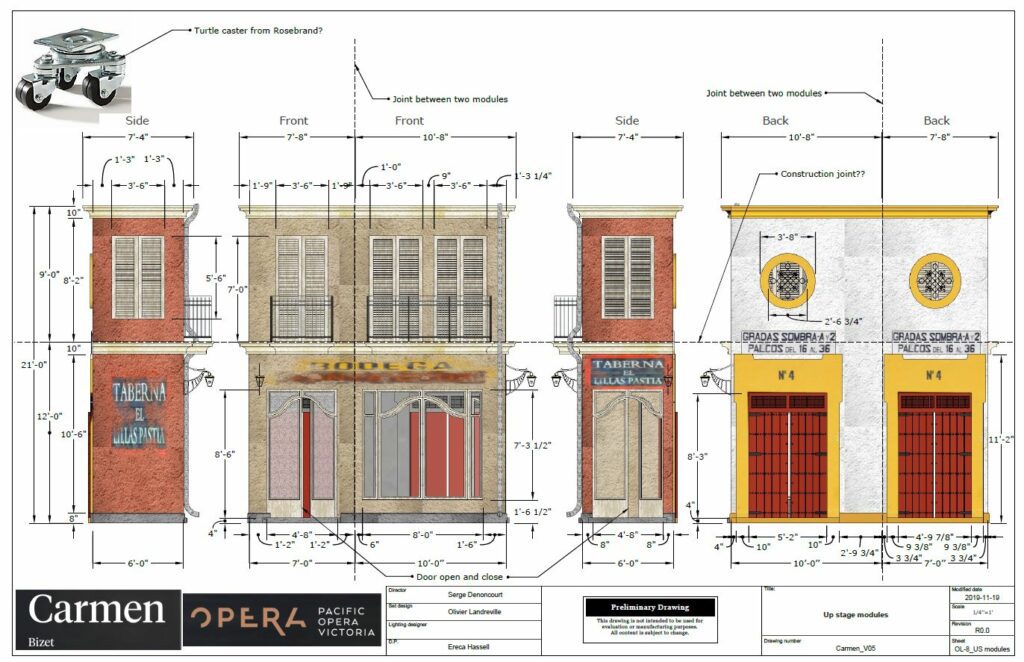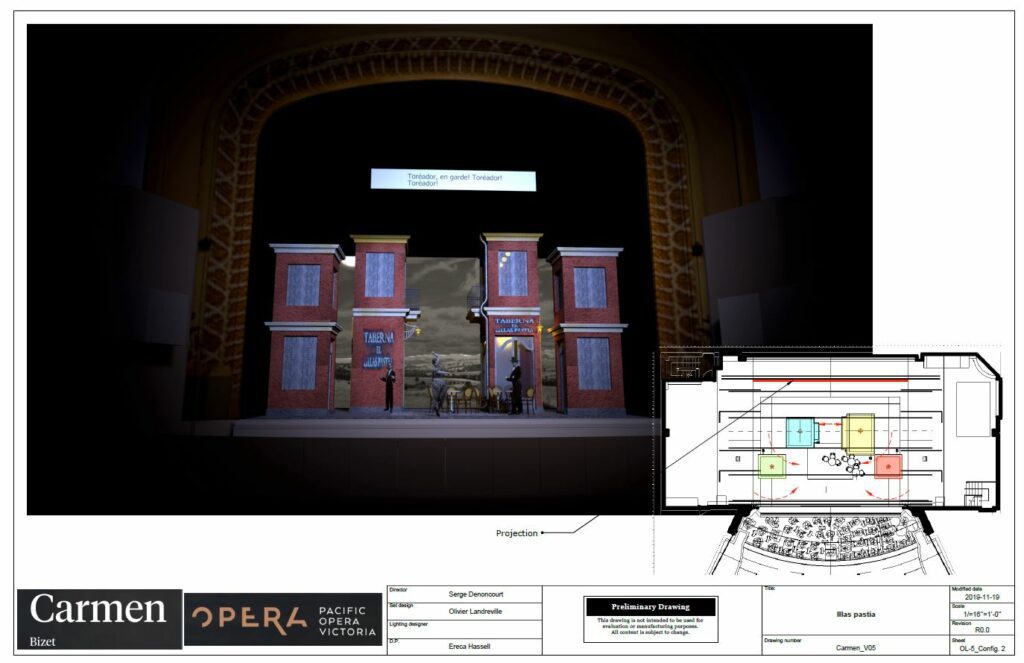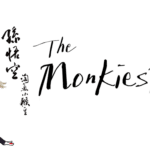Opera Canada continues our Behind the Scenes series, an exclusive look ‘behind the curtain’ with the talented people working at opera companies across the country…
Set designer Olivier Landreville had just finished working on Opéra de Montréal’s 2019 production of Carmen when director Serge Denoncourt asked him to create the sets for Pacific Opera Victoria’s staging. Although, on paper, it was the same opera back-to-back, Landreville says he was frightened and exhilarated by the prospect of creating another fresh Carmen.
“Every production for me is always the same: you’re starting with a blank page,” Landreville said. “Having done [Carmen], and [working] on it for a year and a half before…I thought that I couldn’t find a new way to find my Carmen but…from the frightening part comes the fun part—that is finding the new space, the new emotion that you want to evoke.”
“I don’t like it when the curtain goes up and people clap just for the set…the set is a support to the action, it’s not to be in front of the action”
Landreville’s process for creating this ‘new space’ is reflected below; keep reading to see how the POV team went from inspiration photos, to preliminary drawings and finally construction for their upcoming production of Georges Bizet’s Carmen.
Detail Zoom: Landreville imagined hanging gloves were used like a sign to demarcate a glove seller. He took inspiration from the image to create the lanterns audiences will see in the show. 
Landreville has been designing sets for 30 years and always begins by finding inspirational images. For this production, director Denoncourt imagined the story taking place in 1930s Seville—a small leap from the original setting circa 1875.
“Nowadays, the internet is our best friend,” Landreville said. “At first I was going to the library to find my inspiration but now we are a click away from thousands of pictures and inspiration that we can find. So I have started just having a feel of the city and the architecture.”
The title role of POV’s Carmen was supposed to be sung onstage by mezzo-soprano Carolyn Sproule back in April 2020. The company will take another crack at staging the production in the 21/22 season, after a pandemic-sized delay.
Landreville used the design element ‘patina’ in this production’s sets. The aesthetic technique is used to create the appearance of an object grown beautiful with age or use, like the process through which copper or bronze turns greens with years of exposure.
“Every production for me is always the same: you’re starting with a blank page”
“I like the patina very much on the set. I think you saw the little movie that they did in the shop, so you see how they painted it—I think it’s great and can’t wait to see it live because I couldn’t see it in the shop live…I can’t wait to see it onstage.”
Hopefully, these subtly stunning sets will finally be unveiled in POV’s 21/22 season. The company is nationally renowned for its set-construction facilities and its worksop produces pieces for other opera houses, too.
Carmen is a classic show; tunes like the “March of the Toreadors” click here to listen are beloved of lifelong opera fans and newbies alike. Yet, even in a well-known show, Landreville says the job of a set is to act as a grounding force.
“The set is one of the first things that you’ll be seeing on stage,” the designer said. “The most important thing that the set has to do is ground the action and support the emotion of the playwork, the opera…I don’t like it when the curtain goes up and people clap just for the set. I think the set is a support to the action, it’s not to be in front of the action.”
In the next instalment of our series, we’ll be exploring a different “Behind the Scenes” perspective. Hint: Getting in character.

